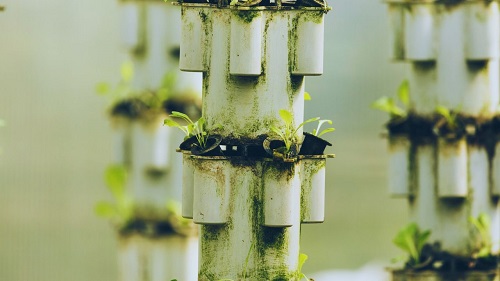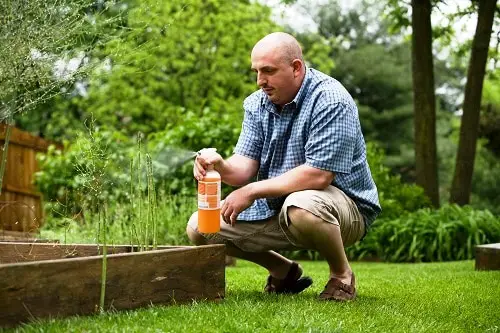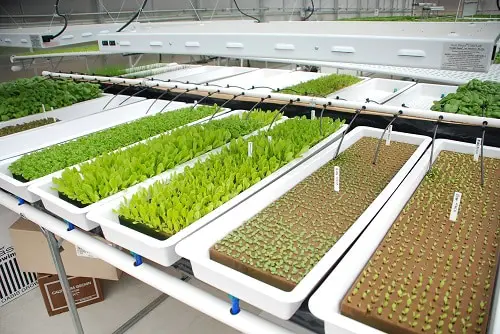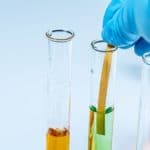Hydroponic is the system to grow plants in a water-based, nutrition-rich solution. For proper growth of it, you have to be careful about its PPM level and maintain a chart as well. As you will grow plants for a longer period, you must know what is a PPM chart for hydroponics.
Using the right nutrients is not the last thing to do. If the PPM level is imbalanced, you will never get the expected result. For quality produce, the plants need to absorb properly while the inequity in the PPM chart can hamper this. Drafting a PPM chart for advanced nutrients is also a vital thing to consider.
A watering solution just like the hydroponic system needs an appropriate concentration of minerals and soluble matter. And to maintain it, the PPM acts as an ideal persuasive.
| Nutrient | Vegetative Stage PPM | Flowering Stage PPM | Recommended pH Range |
|---|---|---|---|
| Nitrogen (N) | 200 – 400 | 100 – 250 | 5.5 – 6.5 |
| Phosphorus (P) | 100 – 300 | 300 – 800 | 5.5 – 6.5 |
| Potassium (K) | 300 – 500 | 800 – 1200 | 5.5 – 6.5 |
| Calcium (Ca) | 200 – 400 | 200 – 400 | 5.5 – 6.5 |
| Magnesium (Mg) | 50 – 100 | 100 – 200 | 5.5 – 6.5 |
| Sulfur (S) | 50 – 100 | 100 – 200 | 5.5 – 6.5 |
| Iron (Fe) | 2 – 5 | 2 – 5 | 6.0 – 7.0 |
| Copper (Cu) | 0.05 – 0.1 | 0.05 – 0.1 | 6.0 – 7.0 |
| Zinc (Zn) | 0.05 – 0.1 | 0.05 – 0.1 | 6.0 – 7.0 |
| Manganese (Mn) | 0.05 – 0.1 | 0.05 – 0.1 | 6.0 – 7.0 |
| Boron (B) | 0.05 – 0.1 | 0.05 – 0.1 | 6.0 – 7.0 |
| Molybdenum (Mo) | 0.01 – 0.05 | 0.01 – 0.05 | 6.0 – 7.0 |
One of our articles –Rockwool Watering Schedule.
What Is A PPM Chart for Hydroponics?
PPM is the abbreviation of ‘parts per million’. It indicates the amount of strength of nutrients in a reservoir of hydroponics system. The PPM basically means how much nutrients (milligrams) are there in 1 liter of hydroponics water.
It is the combination of the particulates in your hydroponic system. Under or overfeeding is the most avoidable thing for your plants. As the plants can receive minerals from tap water as well as from the given nutrients, maintaining the PPM levels is a must thing to do.
Understanding the concept of the surface is not the toughest thing but the hard part comes when you have to adjust the nutrient elements by yourself. Along with PPM levels, the pH also plays a vital role.
Though you are taking the PPM reading accordingly, some particles can be harmful if the pH level is not up to the mark. Suppose at any system, the expected PPM level is 700 and its reading is showing you the same with a pH level of 4.5. This means, there are a lot of heavy metals in the available foods of your plants.
If the system is having a situation like above then it may cause toxicities. This is why the pH level is also important but at first, you have to take care of the PPM. Remember that, if you are adjusting one only a bit, you must have to adjust the other to maintain the balance.
Below we will show you a common PPM reading that might help you to understand the process of making the PPM chart.
- Seedlings: 100- 250.
You do not have to add a lot of particles here, as this stage does not need nutrients.
- Vegging Cycle (First Half): 300- 400.
You have to achieve it right after transplanting. So, adding a few nutrients will be enough.
- Vegging Cycle (Second Half): 450- 700.
Here the growing part begins. At this stage, you have to start giving your plants more nutrients.
- Flowering (First Half): 750- 950.
They have to eat more at this stage as the growing process will continue. So, you have to introduce more nutrients.
- Flowering (Second Half): 1000- 1600.
This is the time when you can give the plant additives. As a result, the plants will start to take more foods than before. It is also the max PPM during flowering.
- End of Flower (Harvest Starting Period): A zero is not expected but you have to bring it down as close to zero as possible.
There will not be a lot of particles there. At this stage, you have to flush the plants.
One of our articles –How to Use General Hydroponics pH Control Kit?
Adjusting the PPM Level
Before adjusting the PPM level for the plants, first, you have to adjust the base water PPM level. As tap water is the source of base water and plants do take nutrition form the water, adjusting is crucial for this. After doing this, you can add anything to the water to start the proceedings.
Adding more particles means you have to take a good look at the PPM chart. A combined reading from the water and the particles will give you the perfect PPM reading. We have listed some points to assist you to make the PPM chart.
Cleaning the Water:
The presence of particles in the water on a rich level raises the chance of PPM misbalance. By using a carbon filter or a river osmosis machine can help you to clean the water as well as get rid of too many particles. Though tap water has helpful minerals, you must keep the balance.
But before going for the filtering, you should consider that during and after the vegging stage, the plants will want more out of their feeding. So, we suggest filtering at the beginning of the plant’s life. At this time, the PPM readings will be lower.
A Quick Fix When Necessary:
If you see a rise in the PPM level, you can add some freshwater to the system that has a good pH level. This will work great to drop the PPM level.
This process can be followed if this problem rises once in a while. If it happens regularly, then you must apply something else to solve it. Whatever the process is, you must balance the level as soon as possible. It will keep the PPM chart in a good state.
Low Reading:
When you find a low reading, you must feed your plants. Adding nutrients to the solution will help the PPM to get back to the expected level. The main thing is to keep a balance between the pH and PPM in the chart.
Whenever you are starting the hydroponic system you have to keep a close eye to the proceedings and the PPM level as well. Otherwise, the plants will not be healthy and there will be a lack of nutrients.
How to Calculate the PPM?
Calculating by volume or mass is the easiest way to identify PPM. For 0.98 liters of water, the other nutrition quantity will be 0.02 liters. So, a total of 1 kg that you are making and the proportion will be almost the same for a large quantity. This measurement is applicable for calculating by mass.
For volume calculation, you have to multiply the nutrient mixtures with 106.The calculations are easy and simple but you have to do it regularly.
Importance of PPM Chart DWC
DWC is a process to grow plants in deep water. Besides water, the plants get a sufficient amount of oxygen, nutrients, lights, and temperature. So, a plant will receive everything that it needs to grow and thrive.
You have to maintain a PPM chart for the DWC system. As a plant will take all its needs from the water, its PPM level must be measured and should be kept under control.
Related Questions
What is a PPM chart for hydroponics?
A PPM chart for hydroponics is a reference table that provides recommended PPM ranges for different nutrients in the nutrient solution used in hydroponic systems. It helps hydroponic growers to maintain appropriate nutrient levels for optimal plant growth and health.
Why is a PPM chart important in hydroponics?
A PPM chart is important in hydroponics because it guides growers in achieving the right nutrient balance for their plants. It helps prevent nutrient deficiencies or toxicities, promotes healthy plant growth, and maximizes yields. It serves as a valuable tool for nutrient management in hydroponic systems.
How do I use a PPM chart for hydroponics?
To use a PPM chart, measure the PPM of your nutrient solution using a PPM meter, and compare it with the recommended ranges in the chart. Adjust the nutrient solution by adding or reducing the concentration of specific nutrients to bring it within the recommended PPM range. Regular monitoring and adjustments based on the chart can help maintain optimal nutrient levels for hydroponic plants.
Can PPM ranges vary for different plant species or growth stages?
Yes, PPM ranges can vary for different plant species and growth stages. Some plants may have specific nutrient requirements, and the ideal PPM range can vary depending on the growth stage of the plant, such as vegetative or flowering stages. It’s important to consider the specific needs of your plants and adjust the nutrient solution accordingly.
Are PPM charts the same for all hydroponic systems?
PPM charts may vary slightly depending on the type of hydroponic system used, such as DWC, NFT, aeroponics, etc. Different systems may require different nutrient concentrations due to variations in water volume, pH levels, and plant uptake rates. It’s essential to refer to a PPM chart that is specific to the type of hydroponic system you are using for accurate nutrient management.
Can I rely solely on a PPM chart for nutrient management in hydroponics?
While a PPM chart can be a useful tool for nutrient management in hydroponics, it’s important to remember that it serves as a general guideline. Factors such as plant species, growth stage, water quality, and environmental conditions can also affect nutrient requirements. Regular monitoring of plant health, pH levels, and PPM readings, along with plant response, should be considered in conjunction with a PPM chart for optimal nutrient management in hydroponics. Consulting with experienced hydroponic growers or agronomists can also provide valuable insights.
Verdict
In a PPM chart, you will get the data of parts per million in units. Maintaining this chart might seem a boring thing to anyone but for proper growth, it is mandatory. If you are a professional hydroponic grower, you also have to do it to achieve success just like the others.
Using all the nutrients, maintaining feeding cycles, adjusting temperature and conditions are not only the to-do tasks. Even after doing all these, your plants may face growing issues and this can be only solved by making a PPM chart for your hydroponic system.





![How to Use Rockwool in Hydroponics [A Conclusive Guide] how to use Rockwool in hydroponics](https://hashtaggarden.com/wp-content/uploads/2020/04/How-to-Use-Rockwool-in-Hydroponics-A-Conclusive-Guide.jpg)
